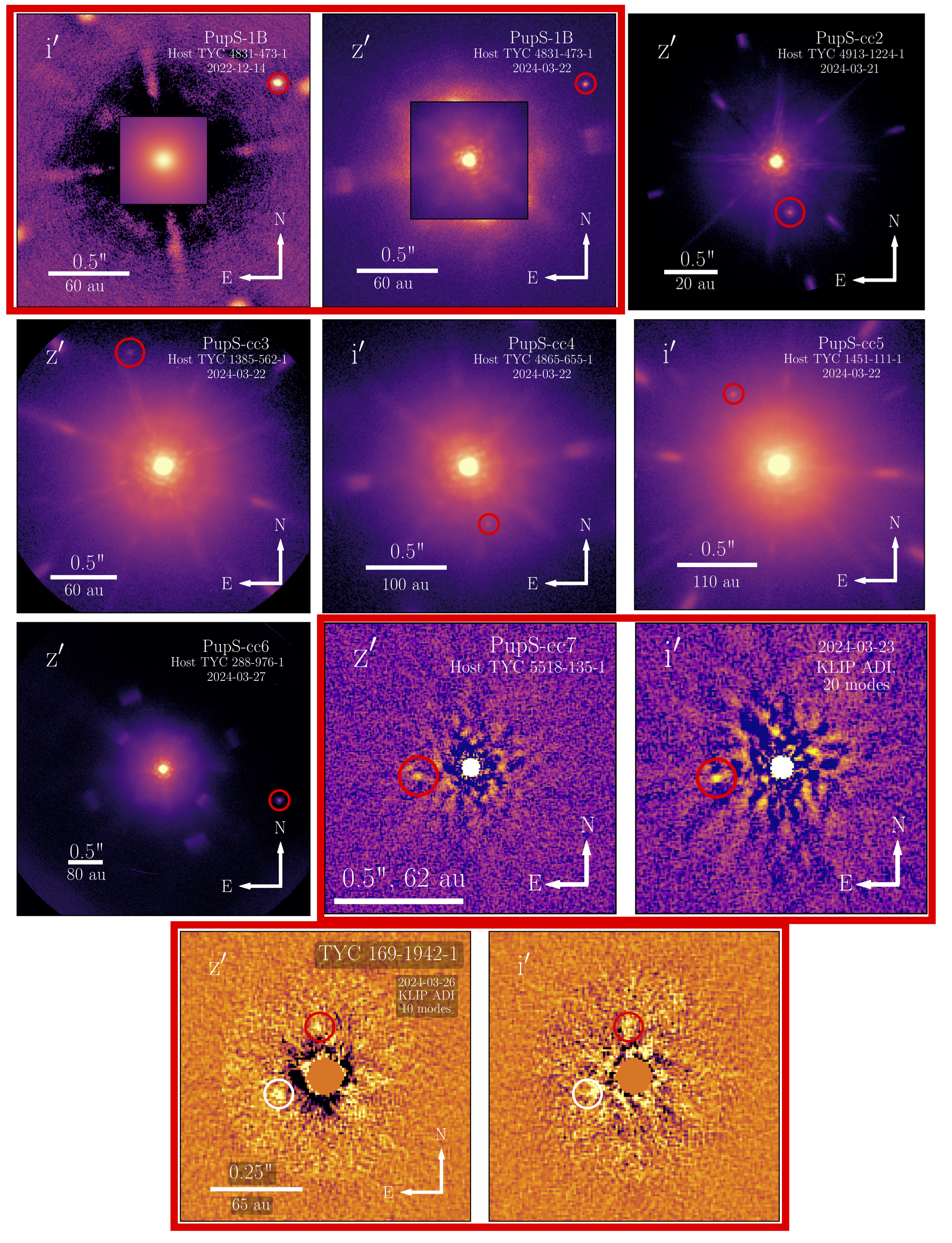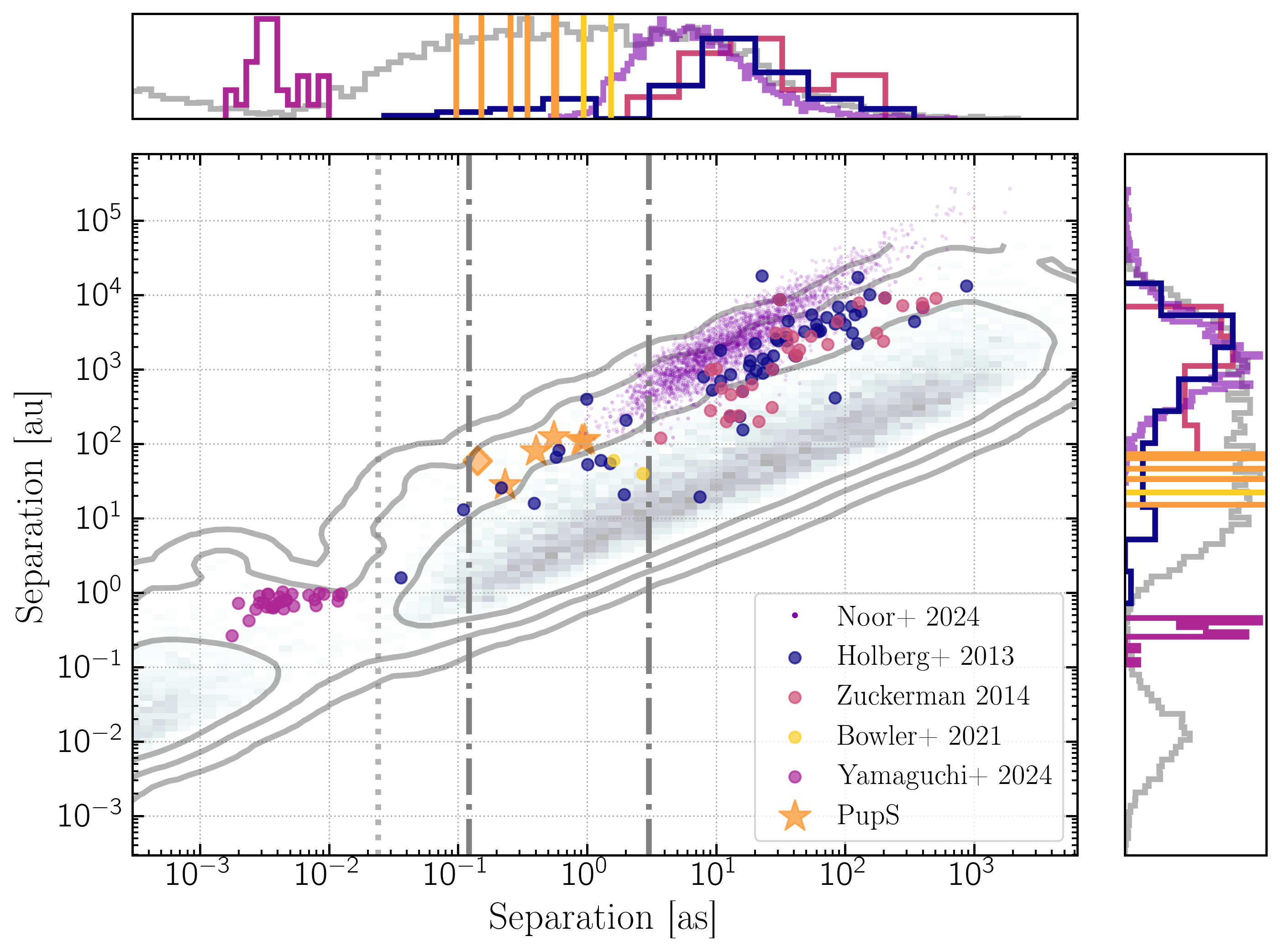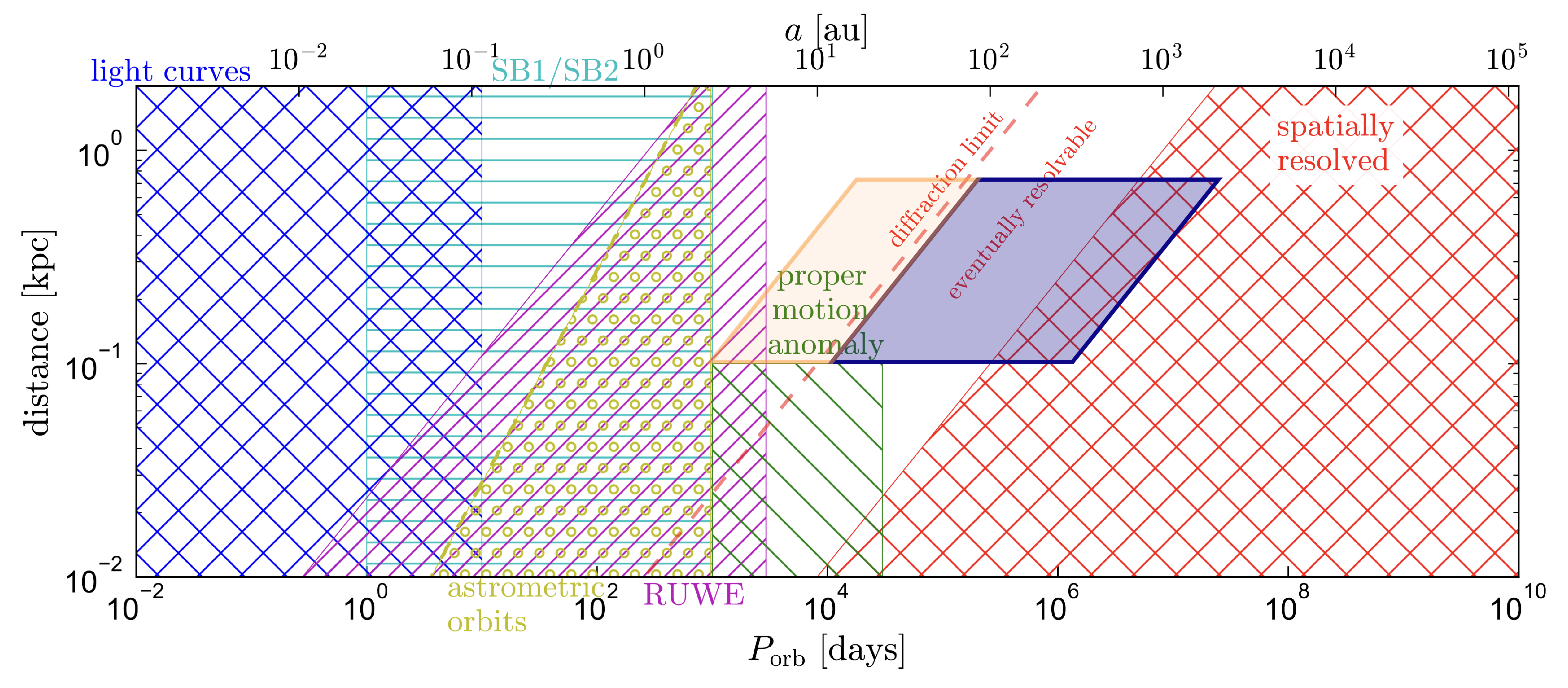
White dwarfs (WD) are currently the only probes of the interior composition of planets. Their extreme gravity causes elements to stratify, with the heaviest elements drawn to the center, with only hydrogen or helium remaining on the surface. Elements sink quickly, so any metals observed in a WD's spectrum must have been deposited recently from the planetary region around the star. This "pollution" has been shown to come from disintegrated planets, planetesimals, and dust disks around the WD. Polluted WD spectra has been used to probe the refractory (non-volatile) compositions of exoplanets and a lot of other really cool exoplanet science.
Broadly I am interested in how wide stellar companions affect the planetary systems of stars. White dwarfs in binaries with Main Sequence stars provide probes of planetary systems at the end of life of a star in the binary. Understanding the role of the wide companion in formation and long-term evolution of panetary systems, as well as its role in driving material on the WD surface, is hampered by low population statistics. Most known WDs in MS binaries are companions to M-dwarf stars, where the WD is easily detectable as its blue color dominates the spectrum of the system. Must fewer known are the so-called "Sirius-Like Systems", where the WD companion is drowned out by the light of the brighter A, F, G, or K type companion (Sirius, an early A star, has a white dwarf companion Sirius B, the first known WDMS system). This sounds like a job for high-contrast imaging!
The ExAO Pup Search has three main goals:

Why use ExAO for this?
There have been several surveys to probe the role of a wide companion in pollution; all have found no evidence of an effect. However with ExAO we can get closer than past surveys into a regime that can't be probed by any other methods. This plot shows the regime in separation in arcseconds vs separation in au expected from theory for WDs in binaries (grey density and contours) adapted from Willems at al. 2004, with circle markers for systems detected in other SLS and WD binary surveys. The orange markers show new discoveries in the Pup Search I paper. The vertical lines show the regime we are sensitive to with MagAO-X in Paper I, with the inner dotted line showing the near-future MagAO-X sensitivity regime with improved coronagraphs. Holberg, Zuckerman, and Bowler systems were resolved in imaging, Noor via Gaia common proper motion, and Yamaguchi via

This plot is a reproduction of El Badry et al. 2024 Fig 1 showing the regions of parameter space for Gaia multiplicity metrics. The blue box shows the Paper I sensitivity region for all targets in the Pup Search target list; the orange box shows sensitivity for improved MagAO-X coronography.
